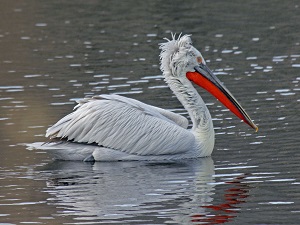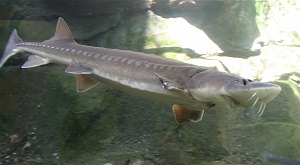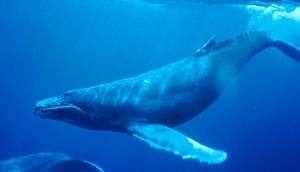A new charity has been launched to transform Britain by hepling it return to a wild state.
Rewilding Britain, the first organisation of its kind, wants to bring back missing species, allow native forests to grow once more on the hills, let rivers run wild and help the sea recover from industrial fishing.
It will seek to restore species that used to live here but have since become extinct or very rare.
These include beavers, wild boar, bison, cranes, pelicans, sturgeon, bluefin tuna, lynx and eventually wolves, grey whales, humpbacks and sperm whales.
Rewilding Britain hopes to establish at least three core areas of rewilded land by 2030, which means, in each case, 100,000 hectares or more.
We want to restore the living world and our relationship with it - George Monbiot
Rebecca Wrigley, programme manager for Rewilding Britain, said: “An important part of our work will be to inspire and inform, and build a wider movement for rewilding. Rewilding projects on the ground will be locally owned and locally run. Our new website features a selection of fantastic rewilding projects that are already up and running across Britain.
“We hope we can gather a groundswell of support. We want to amplify the message that some pioneers have been putting out for decades, and attract new support. Rewilding is really for everyone who cares about our future. Our ecosystems need us.”
Rewilding Britain was inspired by environmentalist George Monbiot’s book Feral: rewilding the land, sea and human life.
Organisers say this tapped into a hitherto-unnoticed public desire for change.
Monbiot will be a key supporter of the organisation.
He said: “The overwhelmingly positive response to Feral was quite unexpected. It seems the book put into words what many people were thinking and longing for. I am thrilled that it has led to the formation of Rewilding Britain.
“The changes we’re calling for would be considered unexceptional almost anywhere else in Europe, where in many countries populations of beavers, boar, lynx and wolves are already recovering rapidly.
“So far the public appetite for change here has had few outlets. We want to change that, and to restore the living world and our relationship with it.”
Rewilding Britain has been founded with the support of key organisations such as Friends of the Earth, the Forestry Commission, Trees for Life, John Muir Trust, the National Trust and The Ecology Trust among others.
Scotland has been the site of several reintroduction projects, going back to the 1970s with a pioneering, and ultimately successful, programme to release white-tailed eagles on Rhum.
A later scheme involving red kites has also been successful and there are on-going trials involving beaver and lynx.
Below are some of the species which could return to the UK.
Dalmatian pelican

Rewilding Britain has listed pelicans as one of the animals it would like to see returned, presumably referring tohuge Dalmatian pelicans which, from archaeological evidence, are known to havebred until the Iron Age. It now breeds no closer than south east Europe, andthere are only around 10,000 to 20,000 birds left in the wild.
Atlantic sturgeon

This species of sturgeon, which can grow up to 11 feet, once travelled up rivers throughout Britain, but it is believed to be effectively extinctas a UK animal, with pollution and over-fishing being the prime cuplrits. Itwas prized for the table in medieval times and is classified as a royal fish,which becomes a crown possession when caught.
Burbot

The burbot is the only freshwater member of the cod family and was once found in river systems inEngland. It is thought pollution caused their decline, with the lastrecorded specimen being taken in 1969 in the Great Ouse, Cambridgeshire. Anangling magazine put up a reward for any further catches – but it is stillunclaimed.
Humpback whale

Rewilding Britain lists the mighty humpback as one of the species it would like to see back in the UK. While a reintroduction of these massivemammals would be technically impossible, it could return of its own accord if its populationsrecover from hunting and if our seas are cleaned up sufficiently to support itsprey food. Perhaps it’s a good omen that one was seen in Auchalick Bay at Loch Fyne last week!







